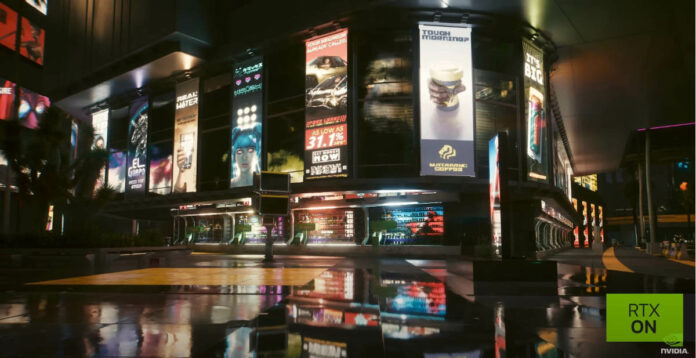CD Project Red in collaboration with Nvidia provided a sneak preview at GDC 2023 of upcoming ‘Overdrive Mode’ for Cyberpunk 2077. The next big step in bringing film-like, real-time path tracing to the masses.
In case you didn’t know, path tracing (basically, full ray tracing) is the gold standard of ray tracing-based rendering techniques that Nvidia inspires toward. The end goal is to accurately simulate light in real time. Sounds simple enough, yet extremely difficult to implement.
Path tracing has been used in film and television since 1997. Back then, a five-minute Toy Story scene could take a little under a month to render. To be precise, Pixar was able to render less than 30 seconds of film per day. Sheesh.
Even though GPUs have become a lot more powerful since then, by comparison, these scenes still take hundreds of hours to complete. This is why the Cyberpunk 2077 showcase is such a momentous occasion. Thanks to third-generation RTX cores, and most importantly, Nvidia DLSS 3, real-time path tracing will soon become a reality.
On to the finer details. Cyberpunk 2077 takes advantage of Shader Execution Reordering, an exclusive RTX 40 Series architecture that optimises GPU workload and makes all this path traced lighting you see in the above trailer possible. Another key aspect is DLSS 3. Harnessing modern AI, DLSS requires only 1/8th of the pixels to reconstruct a fully-rendered image, and in doing so, dramatically increases those juicy frame rates.
“With full ray tracing, now practically all light sources cast physically correct soft shadows,” says Nvidia. “Natural coloured lighting also bounces multiple times throughout Cyberpunk 2077’s world, creating more realistic indirect lighting and occlusion.”
Besides easy-to-render games like Minecraft, Portal and Quake II, Cyberpunk 2077 is among the first triple-A titles to embrace path traced lighting. Additionally, Nvidia released RTX+ Path Tracing SDK 1.0, with hopes that more game developers begin adoption. I, for one, am giddy with excitement.


